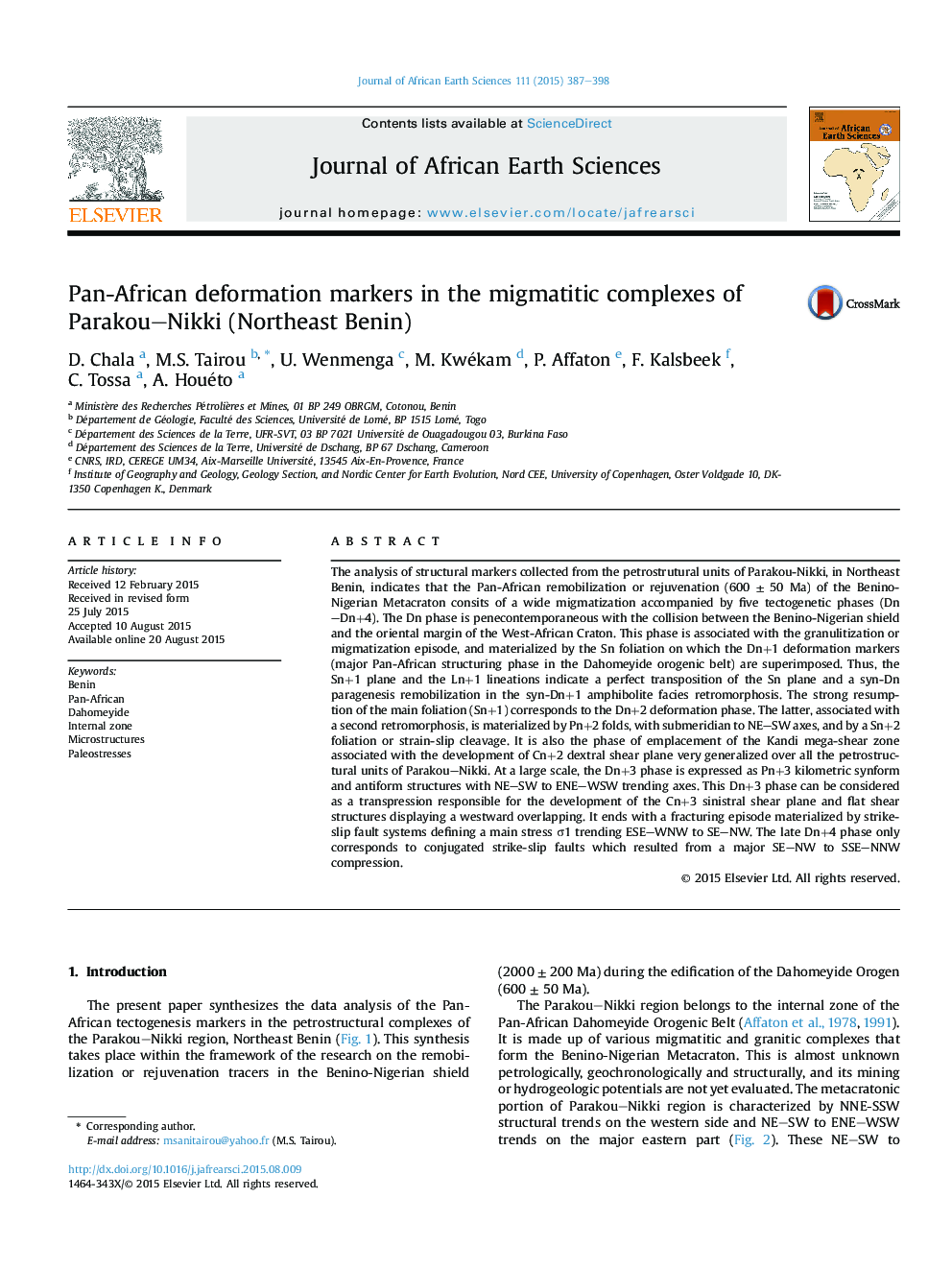| Article ID | Journal | Published Year | Pages | File Type |
|---|---|---|---|---|
| 4728511 | Journal of African Earth Sciences | 2015 | 12 Pages |
•This paper presents the first structural study in the Northeast Benin.•Five Pan-African deformation phases are defined.•Fault plane and striae analysis helps reconstruct the palaeo-stress tensor.
The analysis of structural markers collected from the petrostrutural units of Parakou-Nikki, in Northeast Benin, indicates that the Pan-African remobilization or rejuvenation (600 ± 50 Ma) of the Benino-Nigerian Metacraton consits of a wide migmatization accompanied by five tectogenetic phases (Dn–Dn+4). The Dn phase is penecontemporaneous with the collision between the Benino-Nigerian shield and the oriental margin of the West-African Craton. This phase is associated with the granulitization or migmatization episode, and materialized by the Sn foliation on which the Dn+1 deformation markers (major Pan-African structuring phase in the Dahomeyide orogenic belt) are superimposed. Thus, the Sn+1 plane and the Ln+1 lineations indicate a perfect transposition of the Sn plane and a syn-Dn paragenesis remobilization in the syn-Dn+1 amphibolite facies retromorphosis. The strong resumption of the main foliation (Sn+1) corresponds to the Dn+2 deformation phase. The latter, associated with a second retromorphosis, is materialized by Pn+2 folds, with submeridian to NE–SW axes, and by a Sn+2 foliation or strain-slip cleavage. It is also the phase of emplacement of the Kandi mega-shear zone associated with the development of Cn+2 dextral shear plane very generalized over all the petrostructural units of Parakou–Nikki. At a large scale, the Dn+3 phase is expressed as Pn+3 kilometric synform and antiform structures with NE–SW to ENE–WSW trending axes. This Dn+3 phase can be considered as a transpression responsible for the development of the Cn+3 sinistral shear plane and flat shear structures displaying a westward overlapping. It ends with a fracturing episode materialized by strike-slip fault systems defining a main stress σ1 trending ESE–WNW to SE–NW. The late Dn+4 phase only corresponds to conjugated strike-slip faults which resulted from a major SE–NW to SSE–NNW compression.
Graphical abstractFigure optionsDownload full-size imageDownload as PowerPoint slide
